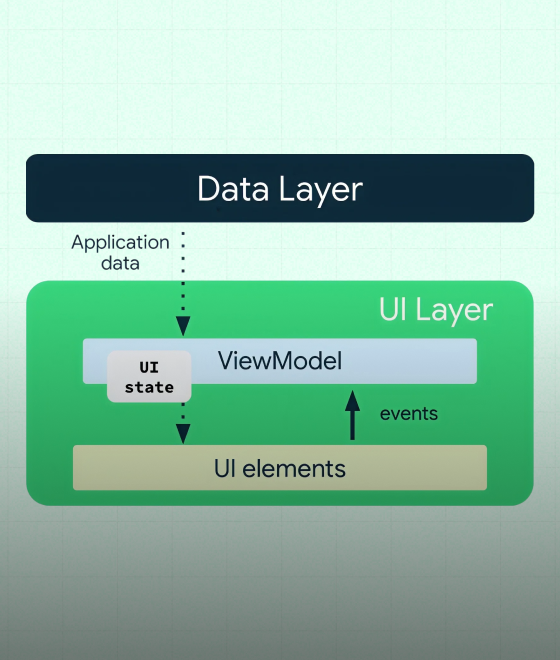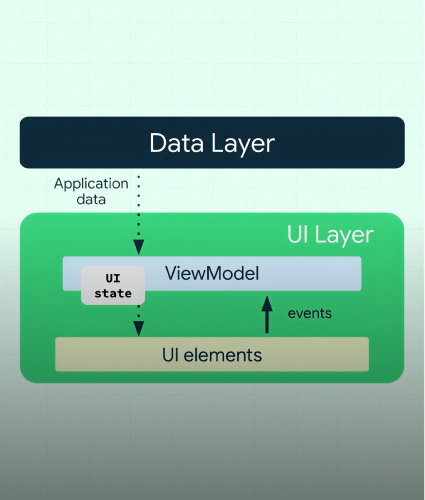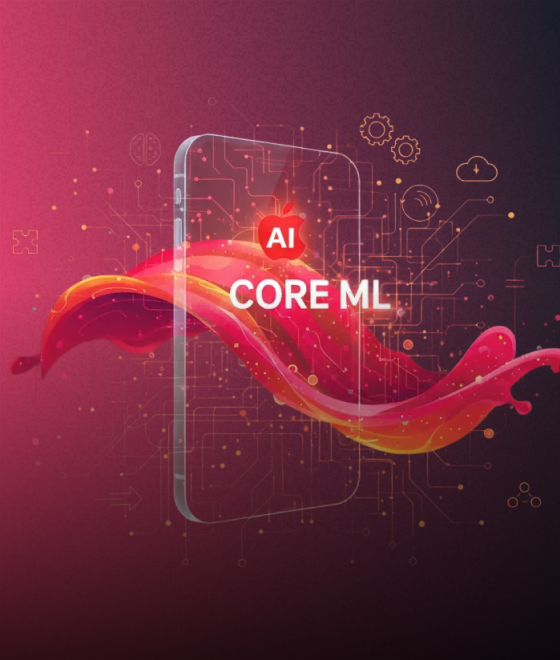UX design has always been about crafting seamless, intuitive, and delightful interactions between people and digital products. But as technology advances, so do user expectations. Enter the age of Generative AI-powered by tools like Copilot, ChatGPT, and Gemini, where AI is no longer just a behind-the-scenes assistant. It’s becoming a creative collaborator, transforming how we design, work, and connect with technology.
In this article, we’ll dive into how AI-driven tools are revolutionizing the UX landscape, unlocking new possibilities, and presenting fresh challenges that designers must skillfully navigate in this rapidly evolving, AI-first world.
Redefining UX: Navigating the Move from Traditional to AI-Driven Design
Traditionally, UX design has been a deeply hands-on, human-centric craft, driven by research, intuition, and constant iteration. We dive into user interviews, sketch wireframes, prototype experiences, polish visuals, and test, test, test. It’s a proven process, but let’s face it, it can be slow, labor-intensive, and sometimes a bit overwhelming.
But the game is changing. With the rise of Generative AI, our workflows are getting a serious upgrade. AI is stepping out of the shadows, not just crunching data, but actively contributing as a creative ally. It can fast-track research, analyze competitors, spark new ideas, automate the boring stuff, and even help anticipate user needs.
Rather than replacing us, AI is supercharging our capabilities. It's streamlining tasks, sharpening our insights, and freeing us up to focus on what really matters: designing thoughtful, impactful experiences that truly put users first.
How GenAI Is Transforming the UX Design Landscape
The rise of Generative AI isn’t just a trend; it’s a turning point in how we approach UX design. From streamlining workflows to elevating user experiences, AI is becoming an integral part of the creative process. Here’s how it’s reshaping the game:
- Smoother Workflows, Smarter Design
AI is speeding up every stage of the design process, from research to prototyping-giving designers more time to focus on strategy and creativity. - Next-Level Personalization
With GenAI, we can now tailor experiences at scale, delivering hyper-personalized interactions that feel truly one-on-one. - Smarter Interfaces, Richer Interactions
AI-driven interfaces are changing how users engage with digital products, making interactions more conversational, adaptive, and intuitive. - Bye-bye to Repetitive Tasks
Tedious, time-consuming work like data sorting or copy generation? AI handles it, so designers can stay focused on innovation and storytelling. - Designing for Everyone
AI is opening new doors for accessibility, helping create more inclusive experiences that adapt to diverse user needs and contexts.
Ready to explore how each of these is reshaping our industry? Let’s dive in.
Making Design Workflows Smoother with AI Assistance
AI is changing how we design user experiences. It's making our lives a lot easier. Instead of spending a lot doing repetitive stuff, we can use AI tools like ChatGPT or Midjourney. Think of it like having a super-smart assistant that can:
- Turn your ideas into actual designs just by typing what you want. You can go from words to pictures in seconds! You just need to give the right command.
- Build wireframes and prototypes super fast, saving us loads of time.
- Figure out what users want before they even know it, making your designs way smarter.
Take something like Microsoft Copilot, for instance. It doesn't just give you little tips. It helps you fix your layouts, write your documentation, check if your design is accessible, and even test if it's easy to use.
Basically, AI allows us to focus on the completion of fun, creative parts of design instead of all the tedious work. We can now design things that really connect with humans, and we can do it faster than ever before. It's like having a creative boost!
Unlocking Hyper-Personalization: Designing Experiences That Truly Connect
AI-powered personalization is revolutionizing how users engage with digital products. The era of one-size-fits-all design is fading. Generative AI is bringing smarter, more intuitive, and genuinely personal interactions to the forefront.
With AI in the mix, digital experiences are becoming more dynamic and human-centered than ever:
- Real-Time Adaptation
Interfaces can now respond instantly to user behavior, delivering exactly what users need, when they need it no clicks wasted. - Tailored UI for Every User
AI can customize everything from layout to content based on personal preferences, making every touchpoint feel custom-built. - Anticipating Needs Before They Arise
By analyzing behavioral data, AI predicts what users want before they even ask, creating a fluid, almost invisible user journey.
Look at platforms like Netflix, Spotify, YouTube Music, or Amazon. Their recommendation engines don’t just push random content; they learn from each interaction, analyzing past behavior, context, and habits to deliver deeply personalized suggestions. Whether it’s the next show to binge, the perfect playlist, or the ideal product, you’re met with a digital experience that feels handpicked just for you.
This is the power of AI-driven personalization: users don’t just interact, they feel seen, understood, and valued. And that’s what takes user experiences from good to unforgettable.
Redefining Interaction: How AI-Driven Interfaces Are Revolutionizing UX
Generative AI isn’t just changing how we design interfaces; it’s completely transforming how users experience them. We’re moving beyond clicks and taps into a world of seamless, intelligent, and human-like interactions.
Here’s how AI is reshaping the way users engage with digital products:
- Conversational Interfaces That Feel Natural
Tools like ChatGPT, Gemini, and Copilot are turning stiff commands into fluid conversations. Users can now interact with systems the way they talk to real people, quickly, naturally, and without a learning curve. - Voice Assistants That Empower Effortless Control
AI-powered assistants like Siri, Alexa, and Google Assistant are making hands-free interaction the norm, enhancing accessibility and enabling users to multitask with ease. - Gestures and Expressions That Speak Volumes
From facial recognition to motion detection, AI is making gesture-based interfaces more responsive and immersive. Logging into apps with a glance? That’s not just cool, it’s a major leap in convenience. - Smarter, More Predictive Search
Google’s AI-enhanced search doesn’t just match keywords; it understands intent, offers intelligent suggestions, and dynamically ranks results in real time. The result? Less friction, faster answers, and a better overall experience.
As AI continues to evolve, interfaces will become increasingly intuitive, adaptive, and emotionally aware, bringing us closer to a future where technology doesn’t just respond, it understands. The UX of tomorrow is here, and it’s intelligent, anticipatory, and deeply human.
Letting Creativity Lead: How AI Takes Over the Repetitive Tasks
AI is reshaping the UX design process by taking the grunt work off our plates, so designers can focus on what really matters: creativity, strategy, and innovation. Instead of spending hours on manual tasks, we now have AI tools that streamline the workflow and boost productivity.
Here’s how AI is doing the heavy lifting:
- Auto-Generating UI Components
Say goodbye to pixel pushing, AI helps build and maintain consistent design systems by generating reusable elements on the fly. - Smarter Usability Testing
AI can instantly analyze user behavior during testing, surfacing valuable insights without hours of manual review. - Content Creation, Simplified
From generating microcopy to creating visuals, AI accelerates the content process while keeping your tone and design language intact. Tools that remove video background or generate images based on prompts are helping designers work faster and with more creative freedom.
Take Adobe Sensei, for example, it analyzes your designs, suggests visual improvements, and even automates layout adjustments, making it faster and easier to refine your work.
With AI handling the tedious tasks, designers are free to dive deeper into storytelling, problem-solving, and crafting experiences that truly resonate. It’s not just about working faster, it’s about designing smarter.
Designing for Everyone: How AI Is Powering More Inclusive and Accessible Experiences
Accessibility has always been a cornerstone of great UX, and now, AI is helping take it to the next level. By integrating intelligent tools into the design process, we can build digital experiences that are more adaptive, inclusive, and empowering for all users.
Here’s how AI is enhancing accessibility:
- Adaptive Design for Diverse Needs
AI enables interfaces to automatically adjust, for example, modifying contrast, text size, or layout for users with visual impairments. - Voice-Powered Interactions
AI-driven voice controls allow users to navigate apps hands-free, which is a game-changer for people with mobility challenges or limited dexterity. - Real-Time Captions and Translations
With AI, live captioning and on-the-fly translation are now more accurate and accessible, making content easier to understand for users across different languages and abilities.
Take Microsoft’s Seeing AI app, it’s a great example. The app uses AI to describe the world around visually impaired users, identifying people, reading text, recognizing objects, and more, all in real time.
By embedding AI into accessibility features, companies aren’t just checking a box; they’re creating digital experiences that are truly inclusive. It’s about designing with empathy and ensuring everyone has the opportunity to connect, engage, and thrive.
Navigating the Challenges and Ethical Considerations
AI is transforming UX design in incredible ways, but it also brings challenges that designers must navigate carefully.
- Striking the Right Balance Between AI and Human Creativity AI can generate designs in seconds, but if overused, it risks creating generic and uninspired user experiences. Designers must ensure that AI enhances creativity rather than replacing it.
- Addressing Bias in AI Models - AI learns from historical data, which may carry biases. If not carefully managed, AI-generated designs can unintentionally reinforce stereotypes or exclude certain user groups. Designers play a crucial role in ensuring AI-driven experiences are fair and inclusive.
- Protecting User Privacy in a Data-Driven World. AI-driven personalization relies on vast amounts of user data. Companies must prioritize transparency and responsible data handling to maintain human trust and avoid ethical pitfalls.
- Ensuring Ethical AI in Decision-Making When AI makes UX decisions, whether it's recommending content or automating interactions, users should always know when they're engaging with AI. Transparency builds confidence and trust in AI-powered experiences.
- Avoiding Over-Reliance on AI AI is a powerful tool, but it should never replace human judgment, empathy, and design intuition. The best UX happens when AI and human expertise work together to create meaningful, user-centered experiences.
Final Thoughts: Designing the Future, Together with AI
There’s no doubt about it, Generative AI is reshaping the landscape of UX design. It’s streamlining workflows, powering hyper-personalization, automating repetitive tasks, and redefining how users interact with digital products. But even as technology evolves, the heart of great UX remains rooted in human experience, intuition, and empathy.
The real question isn’t “Will AI replace designers?”, it’s “How can designers and AI collaborate to create smarter, more meaningful experiences?” The answer lies in finding the sweet spot: using AI for what it does best, speed, analysis, and automation, while keeping human insight at the center of every design decision.
The future of UX isn’t just AI-driven, it’s AI-empowered and human-led.
At Zignuts Technolab, we believe in designing digital experiences that are not only intelligent but also intuitive, inclusive, and emotionally resonant. Whether you're looking to integrate AI into your product or reimagine your UX strategy for the AI era, we’re here to help you make it happen.
Let’s shape the next generation of user experiences, together.




.svg)

.svg)



.svg)

.svg)

.png)
.png)








.png)
.png)
.png)

.png)
.png)



